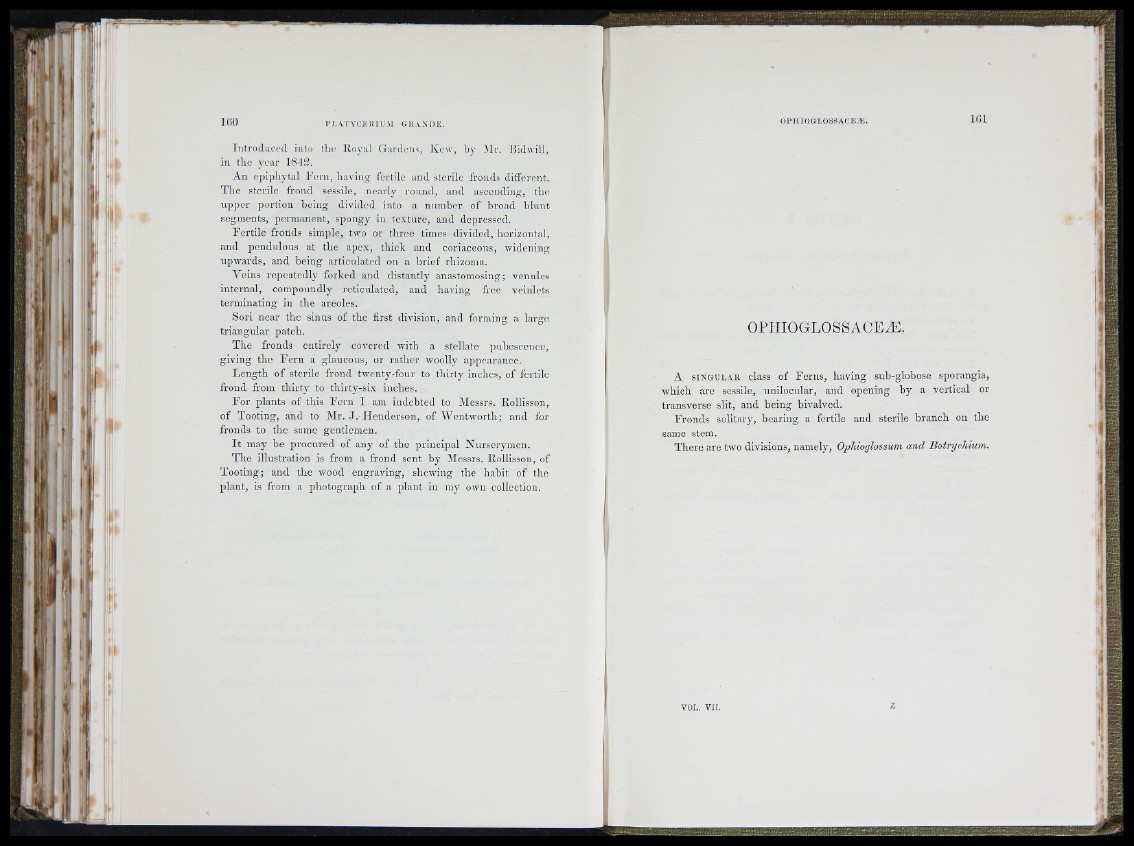
'.A .M i
í J
t j» ' fi I
i
f l 7 ÍÍ
I
?s5 r
i í
J w
1()0 I M .Vr VC li l UUM GUAXDK .
Introduced into tlie Royal Gardens, Kew, by Mr. Ilidwill,
in the year 1843.
An epiphytal F e rn , having- fertile and sterile fronds different.
The sterile frond sessile, nearly round, and ascending-, the
up p e r portion being divided into a number of broad blu n t
segments, permanent, spongy in texture, and depressed.
F e rtile fronds simple, two or three times divided, horizontal,
and pendulous at the apex, thick and coriaceous, widening
upwards, and being articulated on a b rie f rhizoma.
Veins repeatedly forked and distantly anastomosing; venules
internal, compoundly reticulated, and having free veinlcts
terminating in the areoles.
Sori near the sinus of the first division, and forming a large
triangula r patch.
The fronds entirely covered with a stellate pubescence,
giving the F e rn a glaucous, or ra th e r woolly appearance.
L ength o f sterile frond twenty-four to th irty inches, of fertile
frond from th irty to thirty-six inches.
F o r plants of this F e rn I am indebted to Messrs. Rollisson,
of Tooting, and to Mr. J . Henderson, of W en tw o rth ; and for
fronds to the same gentlemen.
I t may be procured of any of tbe principal Nurserymen.
The illustration is from a frond sent by Alessrs. Rollisson, of
Tooting; and the wood engraving, shewing the habit of the
plant, is from a photograph of a plant in my own collection.
O P IIIO G I.O S SA C EA i. IGl
OPHIOGLOSSACEiE.
A s iJ JG U E A B class of F erns, having sub-globose sporangia,
which are sessile, unilocular, and opening hy a vertical or
transverse slit, and being bivalved.
F ronds solitary, bearing a fertile and sterile branch on the
same stem.
There are two divisions, namely, Ophioglossum and Botrychium.
VOL. VII.